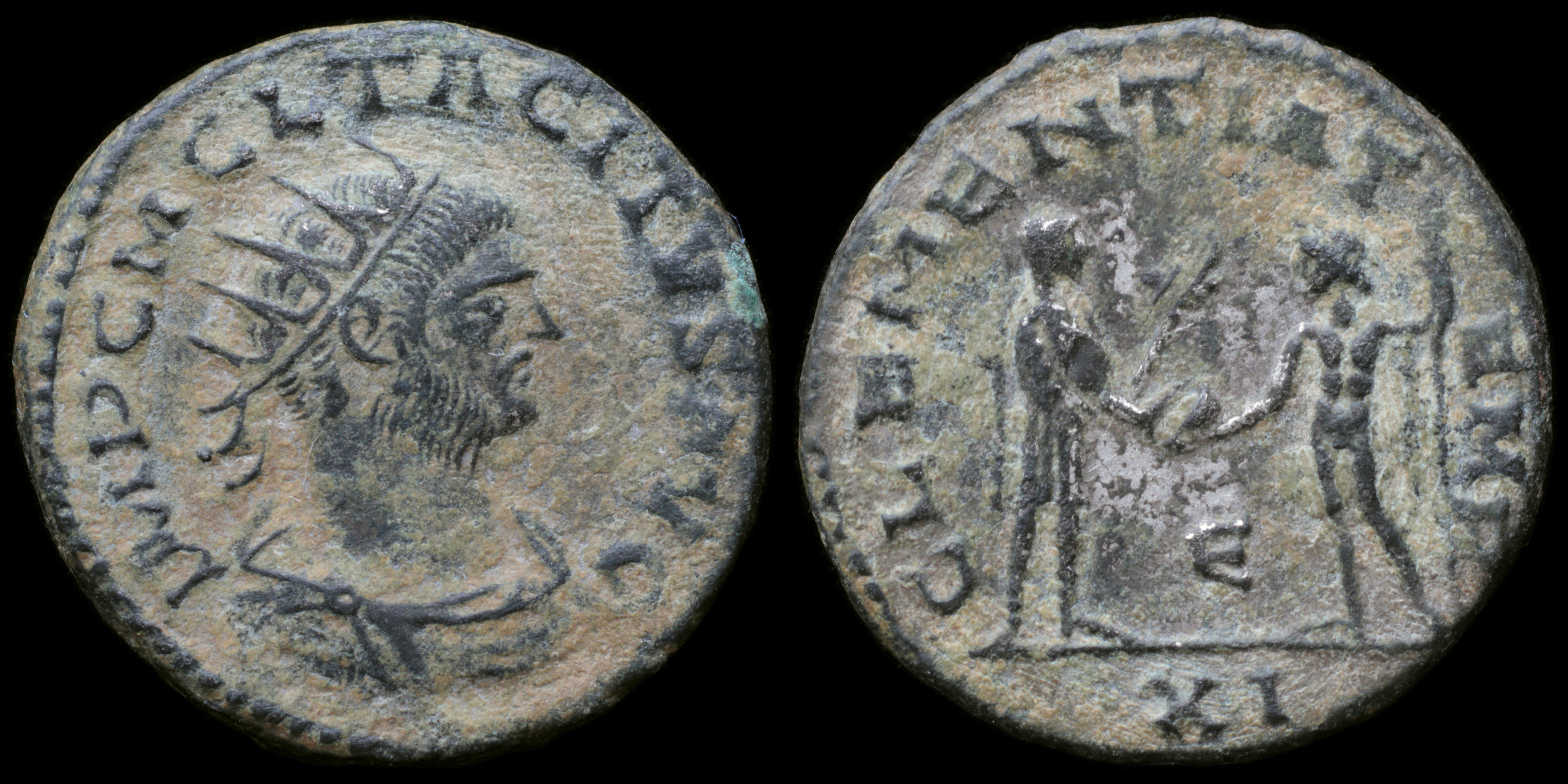The coin was introduced during Aurelian's monetary reform in 274 AD.
The official currency rate system rapidly proved to be impossible to maintain, because as far back as the reign of Tacitus, the monetary administration was reluctant to affix the mark XXI/KA in the exergue of the coins. In actual fact, the new antoninianus was certainly traded by the public above its face value, to rapidly reach 4 denarii, its value in 294 when it was replaced by the radiate neo-antoninianus. This explains the repeated attempts to re-evaluate the new antoninianus by the monetary authorities, which can be seen in the creation of a double antoninianus, which had the same weight but twice its silver content under the reign of Tacitus and Carus. Under Tacitus, Antioch and Tripolis minted coins marked XI/IA. Under Carus, Lyon struck coins showing a double radiate crown, coupled with an Abundantia Aug reverse marked X•ET•I in the exergue. Also under the reign of Carus, Siscia issued coins with Felicitas Rei Publicae reverse mainly with a double bust (Sol and Carus, or Carus and Carinus), marked •X•I• or XI, and sometimes •XI•I.
The introduction of the new antoninianus did not only visibly improve the appearance of the imperial coinage, but also consolidated the weight, which is confirmed by data from the La Venèra hoard.
The official currency rate system rapidly proved to be impossible to maintain, because as far back as the reign of Tacitus, the monetary administration was reluctant to affix the mark XXI/KA in the exergue of the coins. In actual fact, the new antoninianus was certainly traded by the public above its face value, to rapidly reach 4 denarii, its value in 294 when it was replaced by the radiate neo-antoninianus. This explains the repeated attempts to re-evaluate the new antoninianus by the monetary authorities, which can be seen in the creation of a double antoninianus, which had the same weight but twice its silver content under the reign of Tacitus and Carus. Under Tacitus, Antioch and Tripolis minted coins marked XI/IA. Under Carus, Lyon struck coins showing a double radiate crown, coupled with an Abundantia Aug reverse marked X•ET•I in the exergue. Also under the reign of Carus, Siscia issued coins with Felicitas Rei Publicae reverse mainly with a double bust (Sol and Carus, or Carus and Carinus), marked •X•I• or XI, and sometimes •XI•I.
The introduction of the new antoninianus did not only visibly improve the appearance of the imperial coinage, but also consolidated the weight, which is confirmed by data from the La Venèra hoard.

(1)
Tacitus

An
BL
Double Antoninianus
struck 276 AD
in
Antioch
Obverse: radiate, draped and cuirassed bust with paludamentum right; IMP C M CL TACITVS P AVG
Reverse: Tacitus in military dress standing right, holding short eagle-tipped scepter and receiving globe from Jupiter standing left, holding long scepter; CLEMENTIA T_EMP / E / XI
Diameter:
21 mm
Die Orientation: -
Weight: 4.9 g
Die Orientation: -
Weight: 4.9 g
Issue 3, early 276 - VI 276
BNC 1837; RIC1st 211; http://www.ric.mom.fr/en/coin/4092
